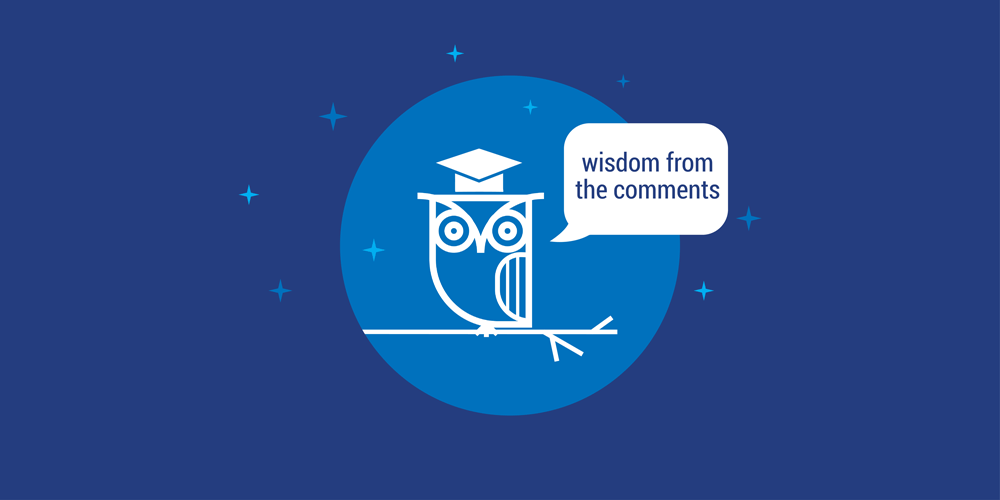nterviewing Diane Liu for the Bobcast reminded us of the connection you had with her post, “Investing in Empathy: The Power of 15 Minutes.” In it, Dr. Liu reflects on the very real challenges of nurturing empathy in the face of the relentless demands of practice. To date, it is the most read and commented (14 and counting) article on Accelerate. We asked you: “What is your strategy for restoring empathy?” Though we had many great responses, we were impressed by the personal reflection and actionable suggestions given in the following five:
What's Your Strategy?
“The cure to my empathy fatigue was compassion.”
—Michelle Hofmann
 Last year on the verge of burnout, I decided to invest some time in understanding how I might pursue a more mindful practice. I participated in a several week course for health care professionals offered by local experts Howard Leaman and Marc Potter. One of the most powerful lessons I learned was the distinction between empathy and compassion. Everyday in my clinical practice, I witness great suffering. Empathy, standing in another's shoes, was crushing me emotionally. Compassion, on the other hand, gave me a path forward. I was no longer just bearing witness to suffering but carefully evaluating what I could do about it. What unique skills do I have as a physician to do something about the suffering? I am a committed continuous improvement. When I learned the distinction between empathy and compassion, I learned how to turn my own burnout and all of the suffering I was seeing in my patients and their families into a path forward to healing, including for myself. We hear the term compassion fatigue, contributed to by all of the things we try to do for our patients and the great many barriers standing in the way to doing so. I try to find the one small thing that I know I can accomplish and just do it. For me, the cure to my empathy fatigue was compassion. See original comment.
Last year on the verge of burnout, I decided to invest some time in understanding how I might pursue a more mindful practice. I participated in a several week course for health care professionals offered by local experts Howard Leaman and Marc Potter. One of the most powerful lessons I learned was the distinction between empathy and compassion. Everyday in my clinical practice, I witness great suffering. Empathy, standing in another's shoes, was crushing me emotionally. Compassion, on the other hand, gave me a path forward. I was no longer just bearing witness to suffering but carefully evaluating what I could do about it. What unique skills do I have as a physician to do something about the suffering? I am a committed continuous improvement. When I learned the distinction between empathy and compassion, I learned how to turn my own burnout and all of the suffering I was seeing in my patients and their families into a path forward to healing, including for myself. We hear the term compassion fatigue, contributed to by all of the things we try to do for our patients and the great many barriers standing in the way to doing so. I try to find the one small thing that I know I can accomplish and just do it. For me, the cure to my empathy fatigue was compassion. See original comment.
“I am but the humble waiter.” —Ryan Murphy
 I think learning my limits, both as a provider and as a human being, has afforded me the ability to maintain empathy. Like many other providers, I entered medicine with this beautiful naivety about my ability as a physician to help others and change lives. In my training I quickly became jaded by the innumerable factors that lead to and perpetuate illness that were all so far outside my control. I began to adopt a new attitude that focused less on the outcomes and more on the practice itself. I would act within my circle of influence to be the best provider I could be, and whatever happened outside of that was beyond my control. I describe my practice to others now as the humble waiter. Patients arrive with certain needs or desires. I offer a menu of options to suit their tastes, patiently answer their questions, and offer my personal recommendations. Often, I will talk to the chef to see if we can whip up something special. Sometimes, though, certain items just aren't on the menu, or we run out of the scallops, or the kitchen overcooks the filet, or the squash isn't in season. I remind myself I am not the chef, the cook, nor God—I am but the humble waiter. I will always offer excellent service and act to the highest standard within my circle of influence. And in those situations outside of my control, I will genuinely express my shared disappointment at the unfortunate reality we now face together. And what is empathy but our ability to share our patients' feelings? See original comment.
I think learning my limits, both as a provider and as a human being, has afforded me the ability to maintain empathy. Like many other providers, I entered medicine with this beautiful naivety about my ability as a physician to help others and change lives. In my training I quickly became jaded by the innumerable factors that lead to and perpetuate illness that were all so far outside my control. I began to adopt a new attitude that focused less on the outcomes and more on the practice itself. I would act within my circle of influence to be the best provider I could be, and whatever happened outside of that was beyond my control. I describe my practice to others now as the humble waiter. Patients arrive with certain needs or desires. I offer a menu of options to suit their tastes, patiently answer their questions, and offer my personal recommendations. Often, I will talk to the chef to see if we can whip up something special. Sometimes, though, certain items just aren't on the menu, or we run out of the scallops, or the kitchen overcooks the filet, or the squash isn't in season. I remind myself I am not the chef, the cook, nor God—I am but the humble waiter. I will always offer excellent service and act to the highest standard within my circle of influence. And in those situations outside of my control, I will genuinely express my shared disappointment at the unfortunate reality we now face together. And what is empathy but our ability to share our patients' feelings? See original comment.
“Empathy takes work on our part. At times it also takes courage...” —Jared Wrigley
 I've noticed that when I have little empathy, I handle stressful situations completely wrong. I agree that empathy is vital when working with people and teams. For me, I've committed myself to think that everyone’s doing his or her best and that there is good in everyone. When I feel the pressures from working in health care, I try to find time to reflect on the stressful situation, learn form it, and remind myself why I chose this profession. When conflict emerges, I try to remain calm, focus on the individual's intentions, and try to find a solution that benefits all involved. Luckily I've had great role models that lead with empathy and compassion. When my empathy tank is low, I reflect on how they brilliantly handled difficult situations and I try to emulate their behavior just as skillfully. Empathy takes work on our part. At times it also takes courage, as you may be the only one exercising empathy. See original comment.
I've noticed that when I have little empathy, I handle stressful situations completely wrong. I agree that empathy is vital when working with people and teams. For me, I've committed myself to think that everyone’s doing his or her best and that there is good in everyone. When I feel the pressures from working in health care, I try to find time to reflect on the stressful situation, learn form it, and remind myself why I chose this profession. When conflict emerges, I try to remain calm, focus on the individual's intentions, and try to find a solution that benefits all involved. Luckily I've had great role models that lead with empathy and compassion. When my empathy tank is low, I reflect on how they brilliantly handled difficult situations and I try to emulate their behavior just as skillfully. Empathy takes work on our part. At times it also takes courage, as you may be the only one exercising empathy. See original comment.
“Everything is less exhausting when we are on the same end of the rope rather than playing tug of war.”
—Kencee Graves
 I have a few tools I use to restore empathy. I really try to humanize my interactions. With patients, I learn something about them that isn't medical (i.e. they love Pink Floyd, make mean Raspberry Jam, or really enjoy going to church). With my residents and students, I ask them to tell me something about themselves that is interesting and what their personal goal is for our time together (shout out to Ryan Murphy for this idea). In both settings, this allows me to find something that I can align with them about. With patients, it becomes about them as a person rather than their illness. With house staff and students, feedback becomes about achieving their goals. Everything is less exhausting when we are on the same end of the rope rather than playing tug of war. Restoring my empathy is also about self-care; for me, that means reading novels and exercise. See original comment.
I have a few tools I use to restore empathy. I really try to humanize my interactions. With patients, I learn something about them that isn't medical (i.e. they love Pink Floyd, make mean Raspberry Jam, or really enjoy going to church). With my residents and students, I ask them to tell me something about themselves that is interesting and what their personal goal is for our time together (shout out to Ryan Murphy for this idea). In both settings, this allows me to find something that I can align with them about. With patients, it becomes about them as a person rather than their illness. With house staff and students, feedback becomes about achieving their goals. Everything is less exhausting when we are on the same end of the rope rather than playing tug of war. Restoring my empathy is also about self-care; for me, that means reading novels and exercise. See original comment.
“I let them guide the Legos or the army men or cars and I follow.” (On recharging with his kids.)—Howard Weeks
 Taking time is really hard—there are certainly days when you don't feel like you can. When I find myself getting frustrated, worried that others aren't following my thoughts or agreeing with my "perfectly obvious plan of action"—that is the time I have to take a deep breath and reflect. I don't work with a single person whose desire is to intentionally frustrate or block me. They are all promoting their own belief in the "right solution" and working just as hard as I am. By stopping and then asking them to explain their thought or plan more clearly, I allow myself to see other sides of the situation, allow them to feel and be heard. And more times than not, we end up in a better place. Even if we don't agree, we have shown each other respect and that builds a relationship bond that will allow subsequent interactions to be stronger. When I get home I engage one of my boys (6 and 3 years-old) and just play with them in their "world"—I let them guide the Legos or the army men or cars and I follow. I don't always understand where they are going but we eventually get there. Kids do the back and forth of social interactions much more seamlessly than adults and I am constantly amazed at how much they teach me. See original comment .
Taking time is really hard—there are certainly days when you don't feel like you can. When I find myself getting frustrated, worried that others aren't following my thoughts or agreeing with my "perfectly obvious plan of action"—that is the time I have to take a deep breath and reflect. I don't work with a single person whose desire is to intentionally frustrate or block me. They are all promoting their own belief in the "right solution" and working just as hard as I am. By stopping and then asking them to explain their thought or plan more clearly, I allow myself to see other sides of the situation, allow them to feel and be heard. And more times than not, we end up in a better place. Even if we don't agree, we have shown each other respect and that builds a relationship bond that will allow subsequent interactions to be stronger. When I get home I engage one of my boys (6 and 3 years-old) and just play with them in their "world"—I let them guide the Legos or the army men or cars and I follow. I don't always understand where they are going but we eventually get there. Kids do the back and forth of social interactions much more seamlessly than adults and I am constantly amazed at how much they teach me. See original comment .
On Accelerate, comments are a grammatical judgment-free zone; we’re just happy that you’re sharing. The above comments were lightly edited for reposting. Links to all original comments are provided.
Accelerate Editorial Team
Chief Wellness Officer Amy Locke shares practical strategies for leaders to address the real tension we’re feeling between the desire to take a break and the increasing workload.
COVID-19 has brought a new challenge to the work of continuous learning in health care: how to teach new information when it is constantly changing and emotions run high. As nurse educators for the emergency department, the pulmonary and palliative care unit, and outpatient clinics, Emma Gauci, Paige Wilson, and Sarah Smith have been thrown into an educator’s quandary: how to help staff feel as knowledgeable and supported as possible.
Nurses are notorious for not taking breaks—the culture of their work environment doesn’t make it easy. Katrina Emery, a MICU charge nurse working on her doctor of nursing practice (DNP), sheds light on how to change culture to prioritize breaks to improve health and wellbeing.
